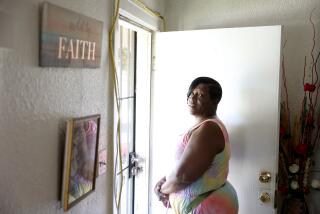More Effort and Information
- Share via
Teen-agers in foster care face unplanned pregnancies in alarming numbers, a measure at least in part of their insecurity and ignorance as well as society’s indifference to them.
Many children in foster care have rebelled against their families. Some have no families, or have families so abusive that they must live apart. The sense of insecurity of all children in foster care is compounded for the increasing number who are adolescents, an age of searching for personal identity. All too often they are uninformed about sex, a contributing factor in the rising rate of pregnancy.
The Children’s Defense Fund, a national child advocacy group, has recently issued a report on preventing pregnancy among teen-agers in foster care. For the last year on which good figures are available, 1984, almost 276,000 children were in foster care, the report said. Almost half were female. Almost half were minorities. Almost half were teen-agers.
Teen-agers form more of the foster-care population now because of increased emphasis on keeping smaller children with their families, because younger children are more likely to be adopted, because many states prefer that the child-welfare system rather than the juvenile-justice authorities deal with problem children and because single parents often have more difficulty dealing with teen-agers than with younger children.
These young people often face problems in school, may have limited access to good health care, and carry a history of neglect. Like their teen-age peers in more stable situations, they have emotional problems. Solution? For some, sex and a baby. The Children’s Defense Fund report cited a Kansas City study that found that teen-age females in foster care were more likely to be sexually active at earlier ages than the average, had less knowledge about birth control and were twice as likely to become pregnant.
With the American Public Welfare Assn., the Children’s Defense Fund surveyed child-welfare programs nationally in hopes of finding successful programs dealing with these youngsters, and they did find a few. Mainly they found a pervasive lack of interest on the part of both government and the public as well as inability to cope with the problem even where there was concern.
Avoiding further neglect of these youngsters requires a response from two quarters, the report said: All the people involved in providing their care must recognize and deal with sexuality and family planning issues, and all those people involved in teen-age pregnancy-prevention programs must make special efforts to remember the teen-ager in foster care who is at special risk.
More to Read
Sign up for Essential California
The most important California stories and recommendations in your inbox every morning.
You may occasionally receive promotional content from the Los Angeles Times.










